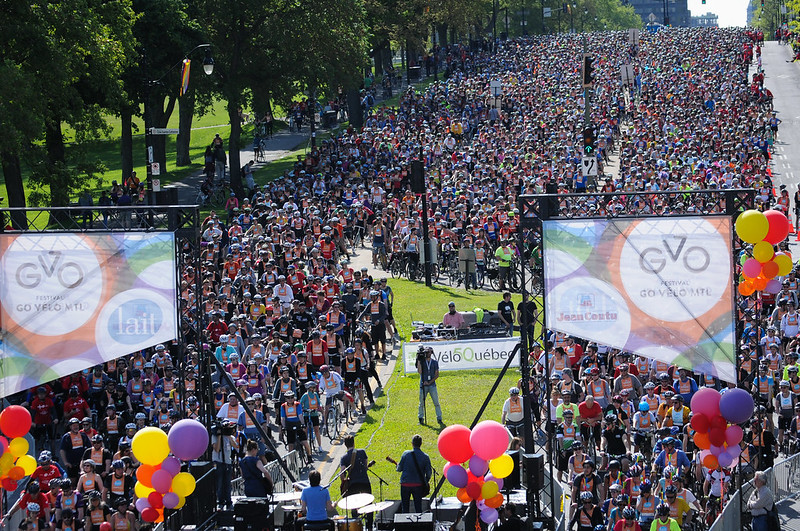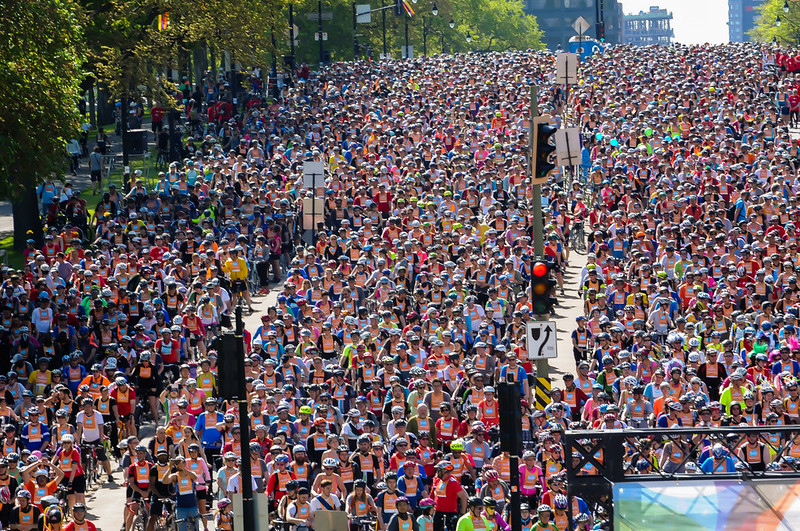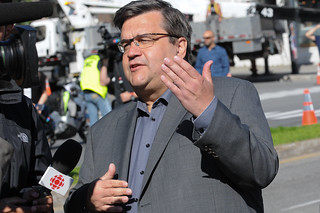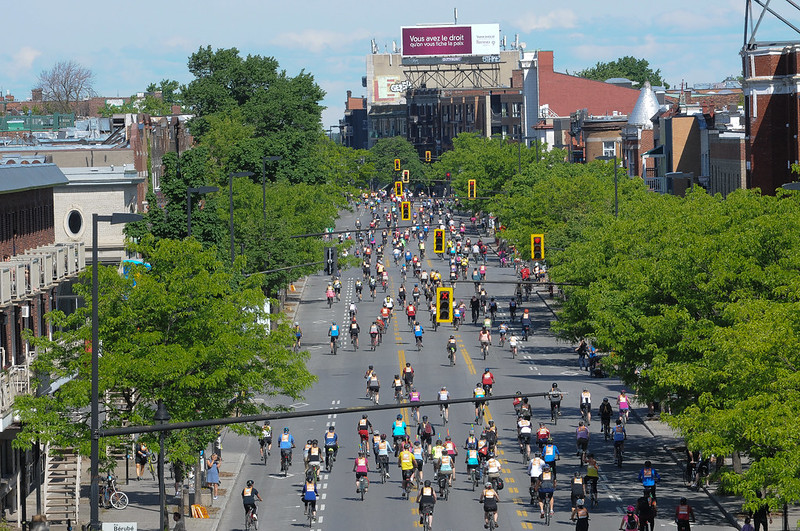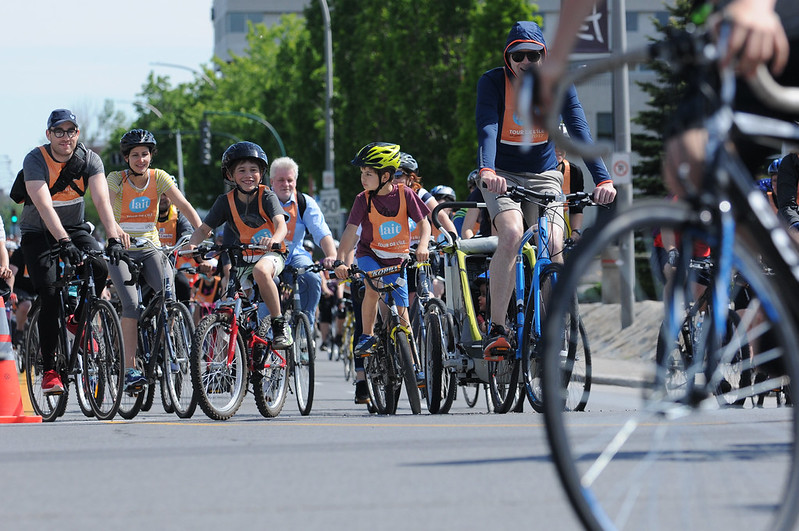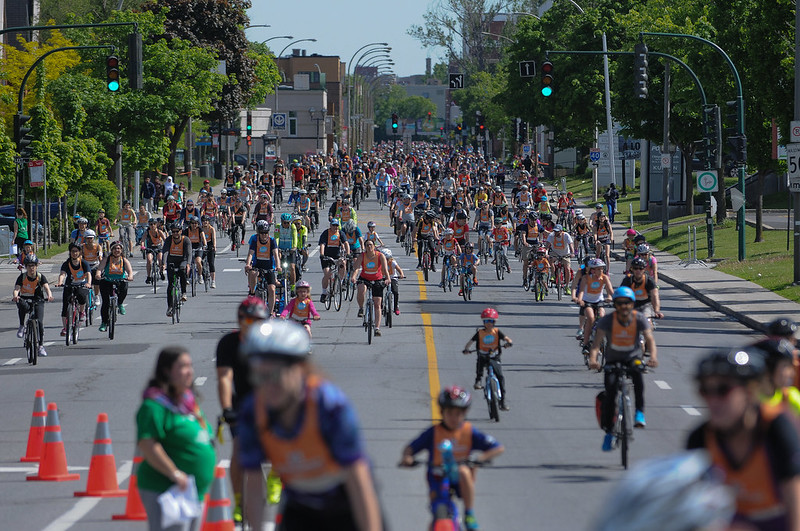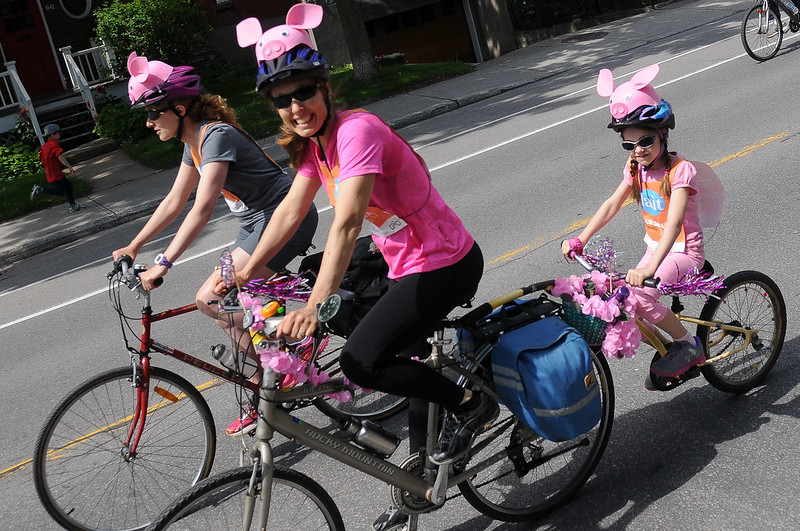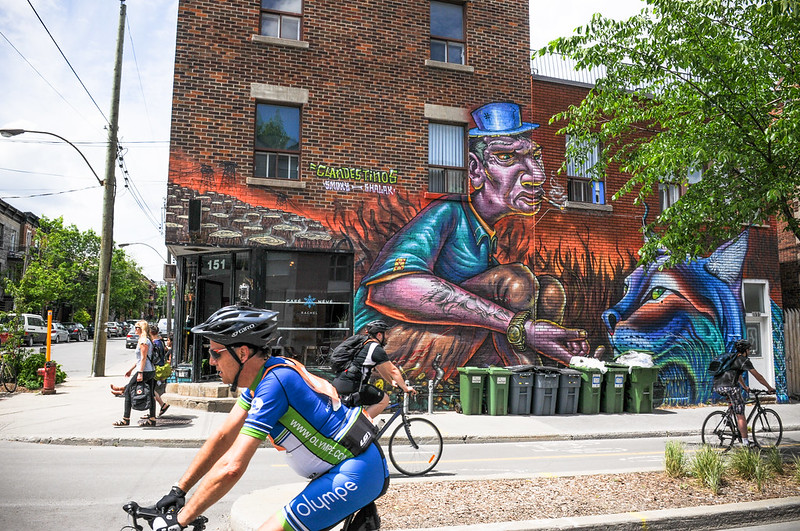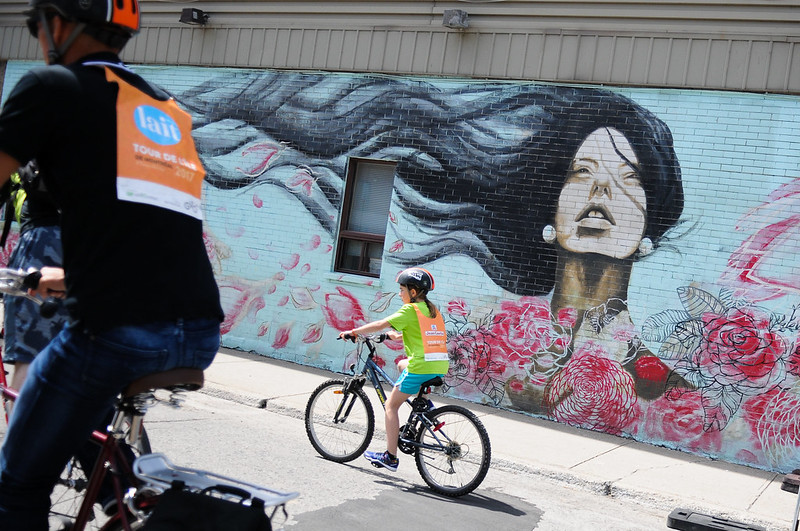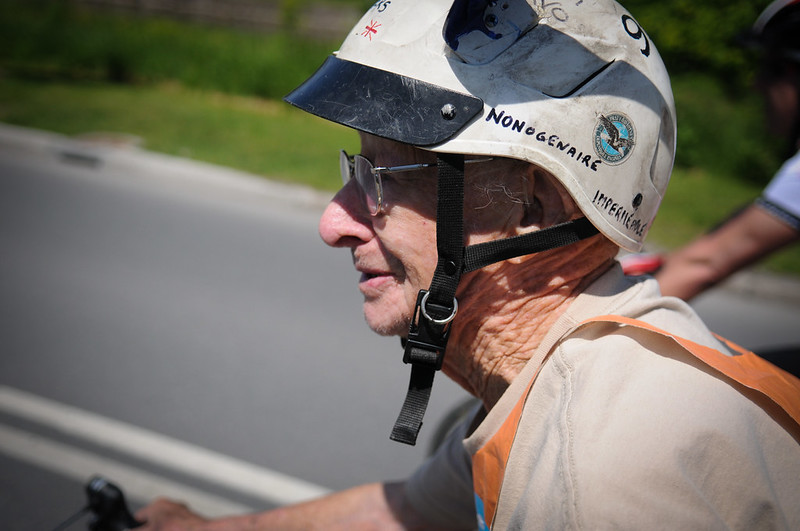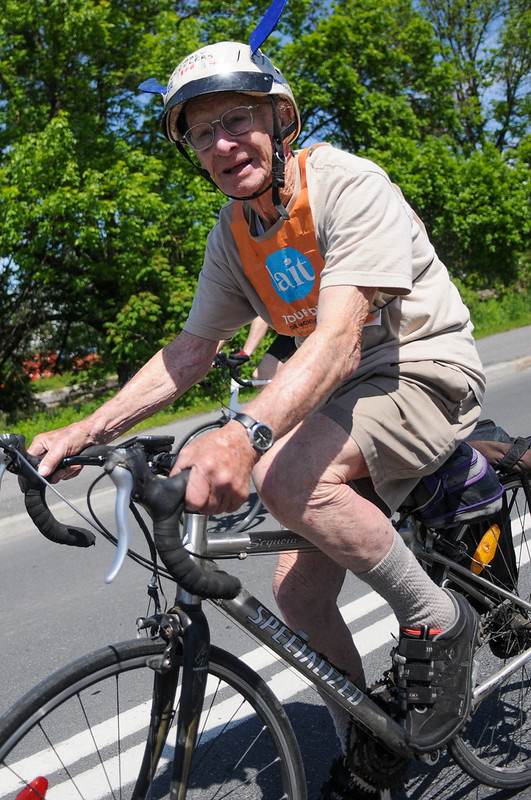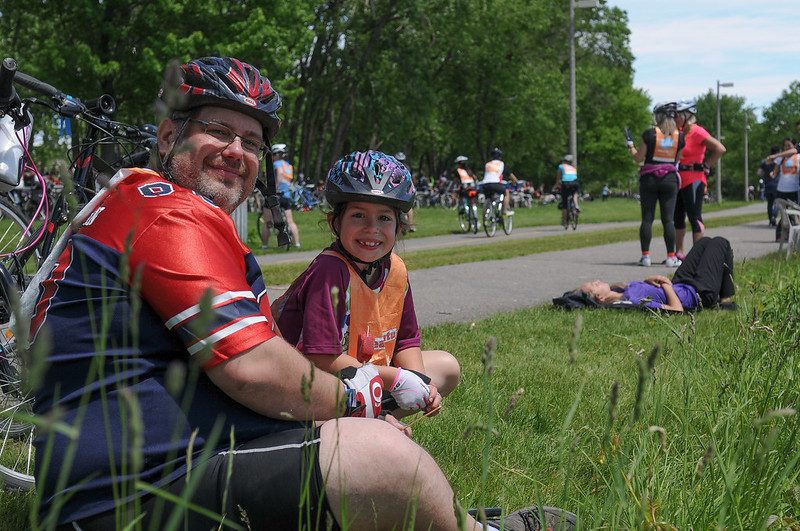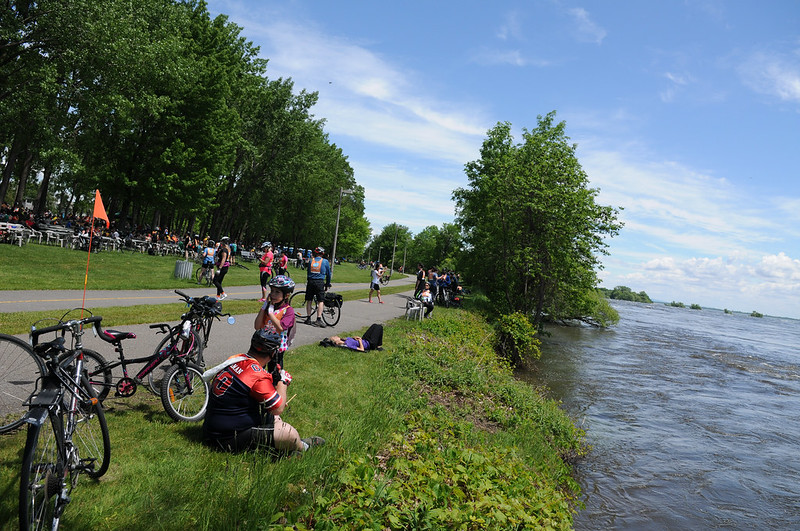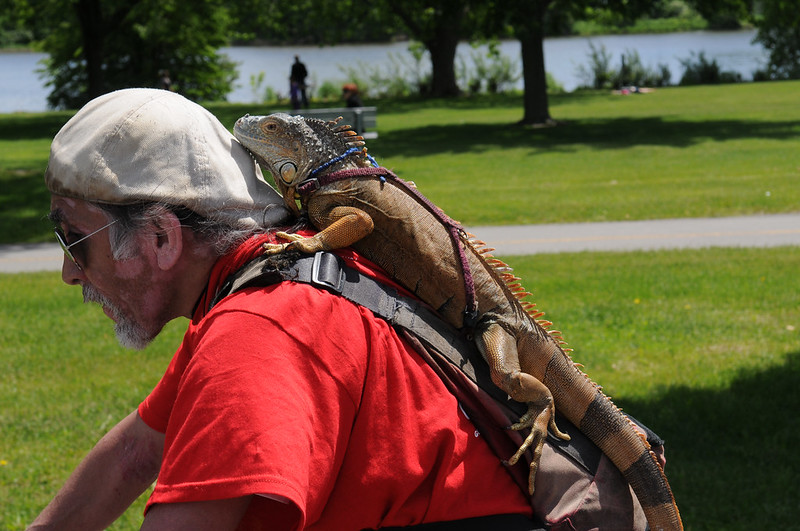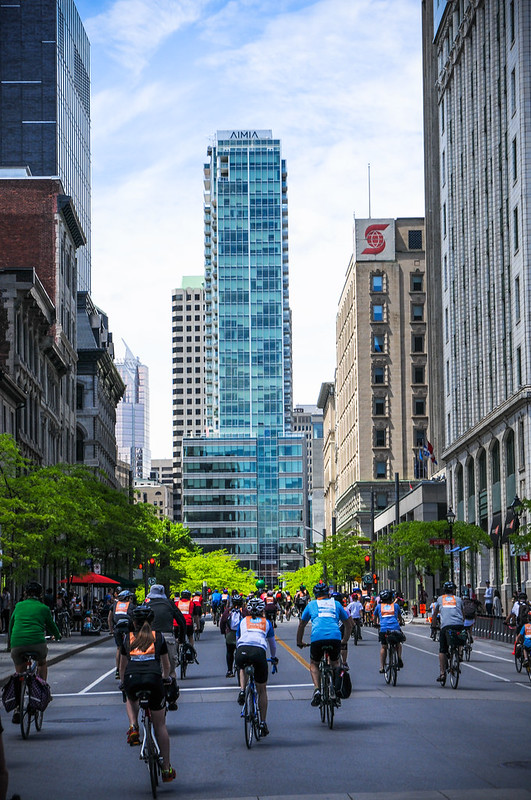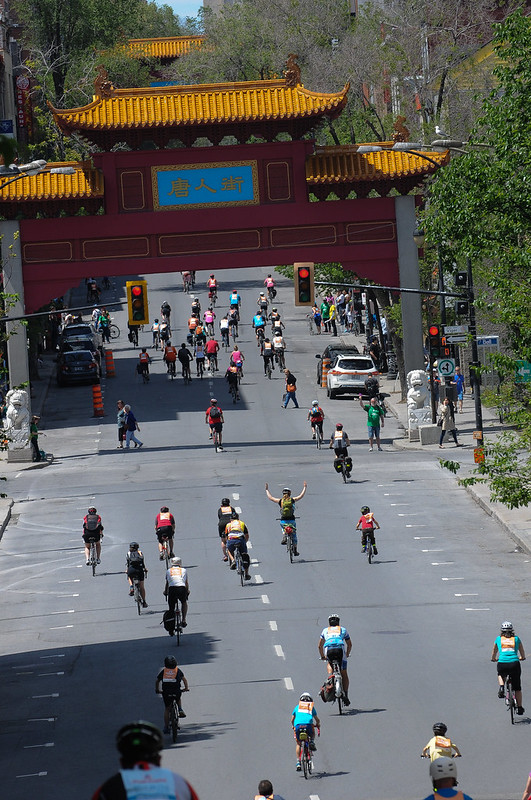Today I took part in the largest ride of my life: the 33rd annual Tour de l’Île in Montréal. I was one of 25,000 people to enjoy a completely carfree journey around this island city.
Can you find me? I’m on the right side, wearing a helmet (just kidding):
Keep in mind this ride comes after 15,000 people showed up to ride (in the rain) the Tour la Nuit just two days ago. It’s all part of the Go Bike Montréal Festival — a full week of bike rides and events that is so engrained in the local culture it has become unassailable (except for a few NIMBYs who are confidently dismissed by the organizers).
“It’s about quality of life for our city, it’s about fighting against greenhouse gas emissions, and it has helped totally change our urban planning.”
— Denis Coderre, Mayor of Montréal
While the sheer number of people was impressive (it used to draw 45,000 people in the early 1990s, when it was the only event of its kind in Canada); what I’ll remember most was the experience of cycling for 30 miles and never having to think about a car. Organizer Vélo Québec does something remarkable for this event: They manage to prohibit auto use for nearly the entire day on a route that rolls through major urban arterials, neighborhoods rich and poor, and by iconic downtown monuments.
After the ride I chatted with Vélo Québec’s General Director Joëlle Sévigny. I told her how our analogous ride, the Bridge Pedal, sometimes forces people to turn back because they don’t meet a time cutoff that’s pre-determined by the Portland Police who are eager to “re-open” the streets for auto use. Sévigny explained to me that their street permit with the City of Montréal is based on the time the last rider finishes.
Yes, you read that right. The people riding set the timeframe.
Not only does the route stay open for a generous amount of time, but as you ride, cars are nowhere to be seen. This is possible because Vélo Québec closes both directions of major arterials, and they cordon off one full street over from the route as well. That means there are no people in cars backing up and idling at route crossings and there are no traffic flaggers stopping the ride to let auto users by.
It might seem like a small thing, but it’s an amazing experience to ride a 30-mile loop in a major city of 1.7 million people without ever thinking about an automobile.
This feat is possible for several reasons. Montréal has a very mature relationship with cycling because they’ve been building high-quality bikeways since the 1980s (more on that in later posts). They also have 2,600 volunteers and the full blessing of the City of Montréal. Unlike Bridge Pedal, whose organizer has begun complaining publicly about what he sees as exorbitant permit and policing fees charged by the City of Portland — the Tour de l’Île is subsidized by the government.
At the start of today’s ride, Montréal’s Mayor Denis Coderre — who has joined the ride in years past — told me the ride is about more than just cycling. “It’s about quality of life for our city, it’s about fighting against greenhouse gas emissions, and it has helped totally change our urban planning.” He then went on to tell me they have 728 kilometers of bike paths and are aiming for 1,200.
At the end of his speech, and before he blew the ceremonial starting horn this morning, Corderre yelled, “Vivre à Montréal!”
And we were off. Montréal belonged to us.
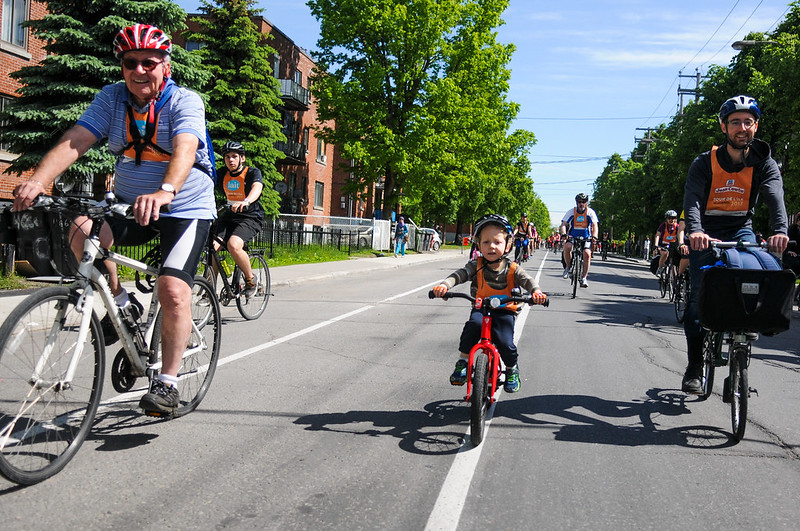
Advertisement
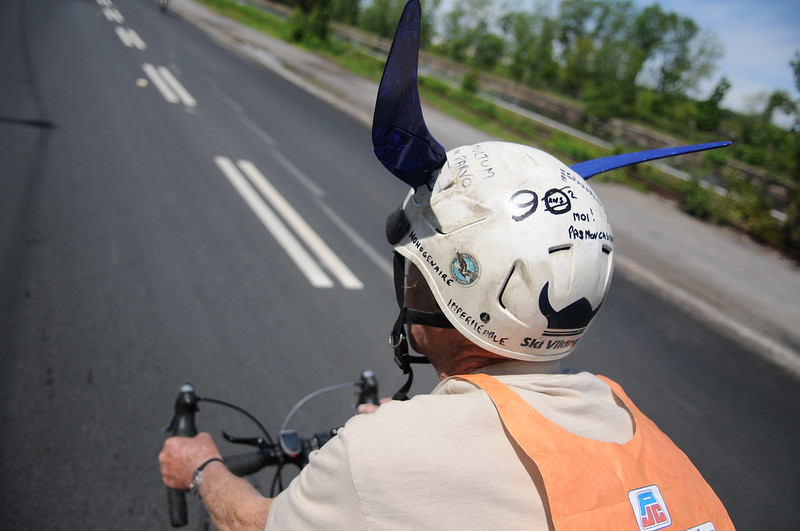
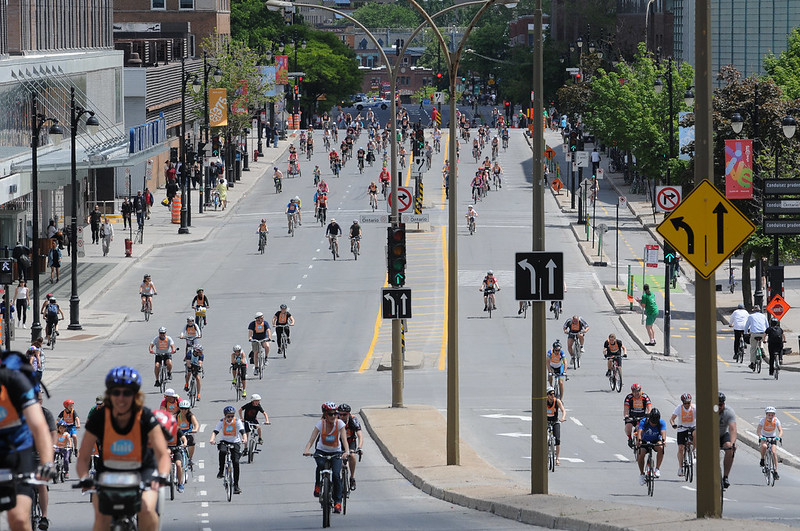
— Jonathan Maus: (503) 706-8804, @jonathan_maus on Twitter and jonathan@bikeportland.org
BikePortland is supported by the community (that means you!). Please become a subscriber or make a donation today.


